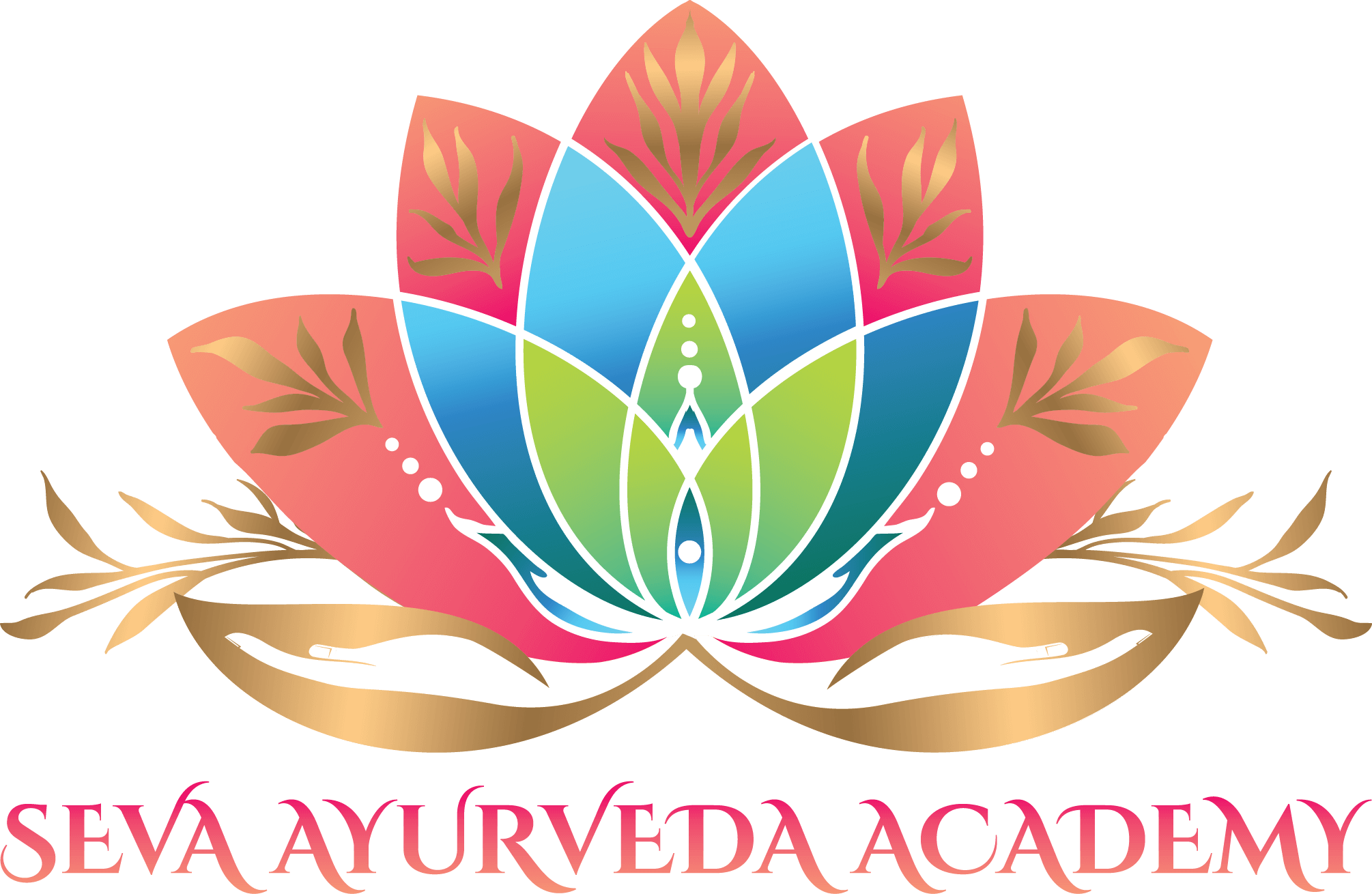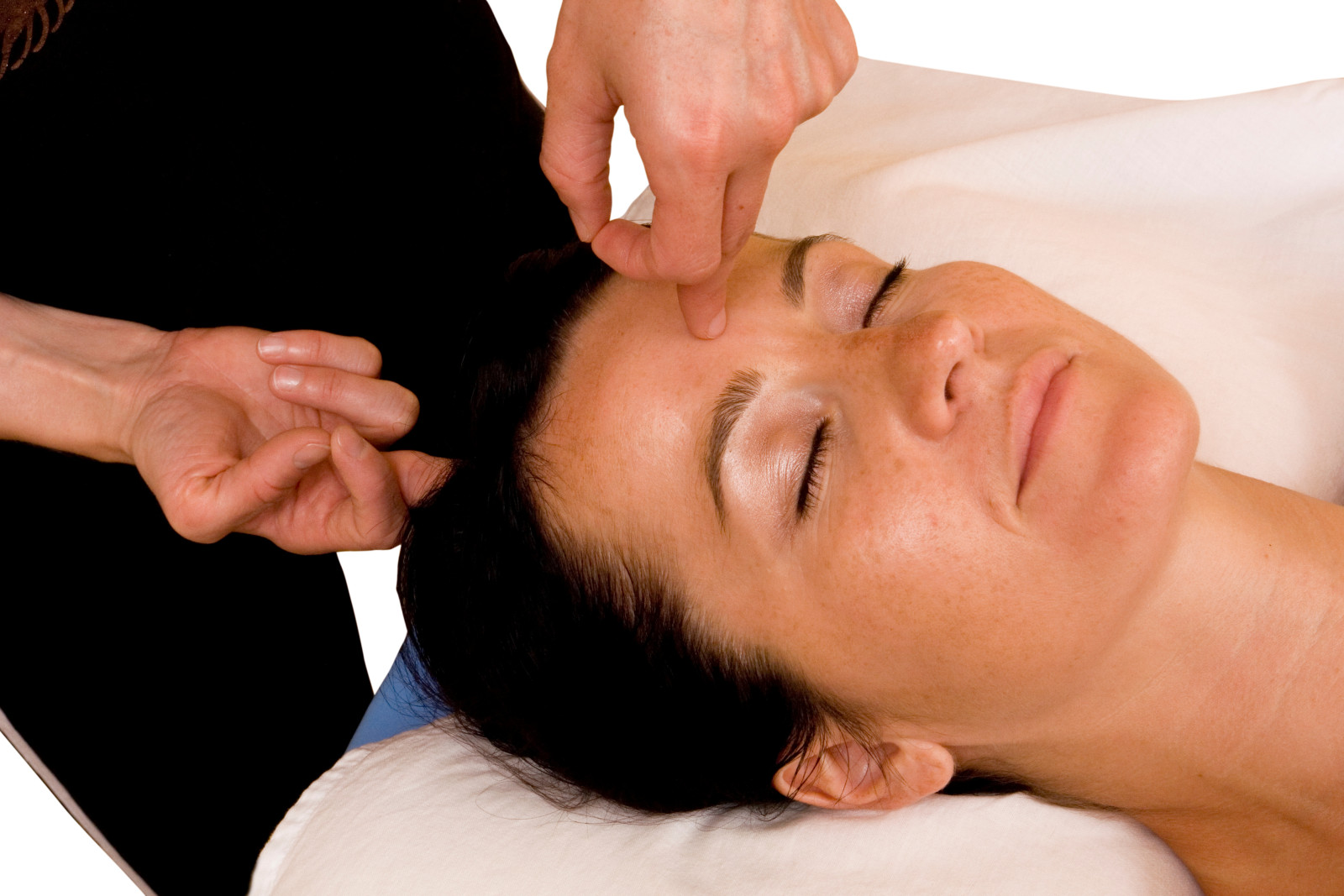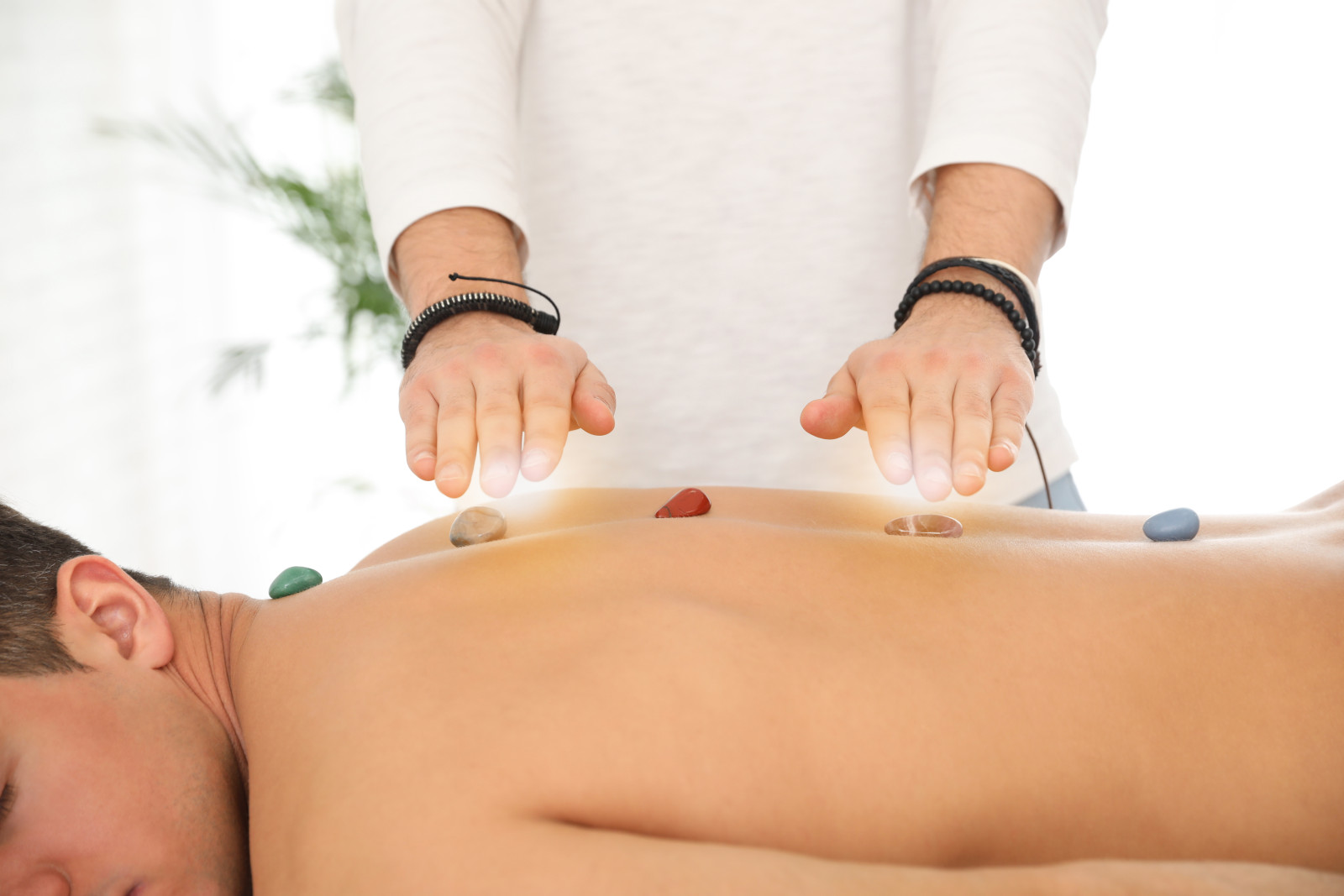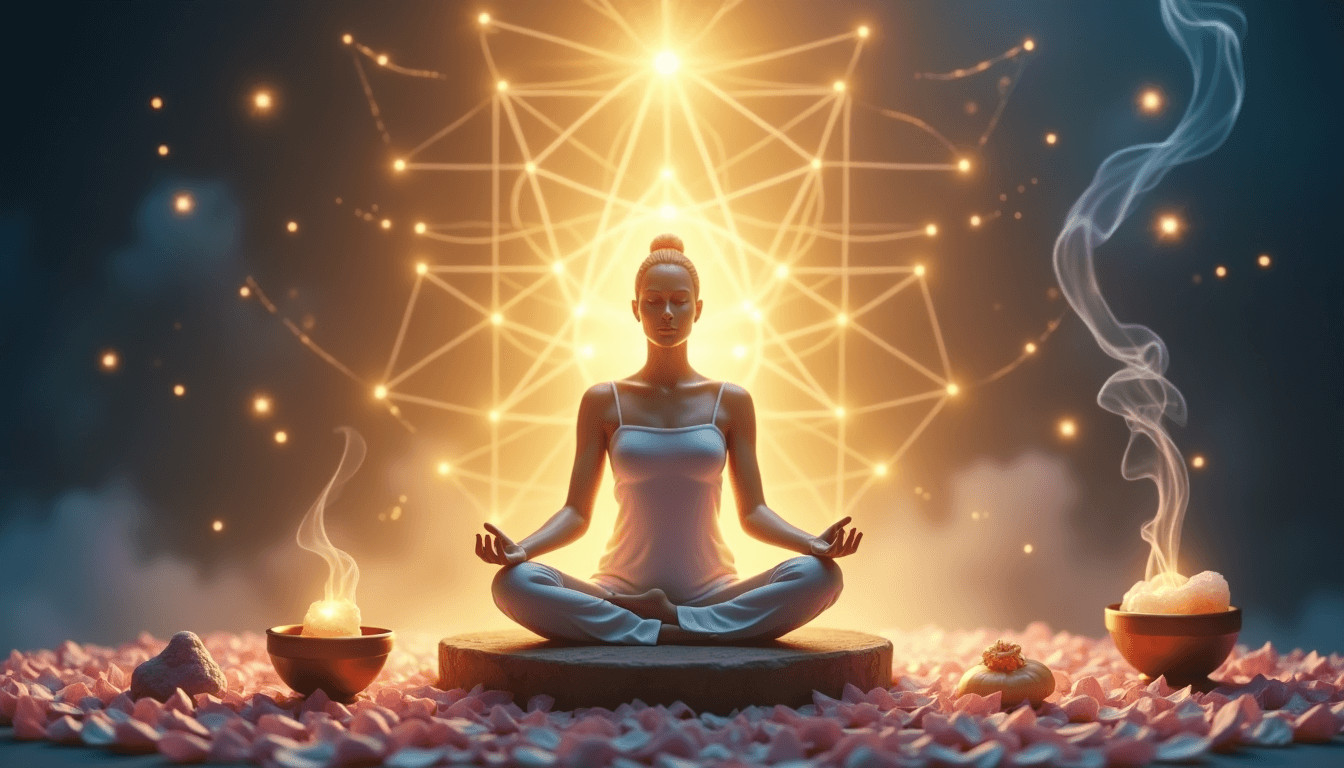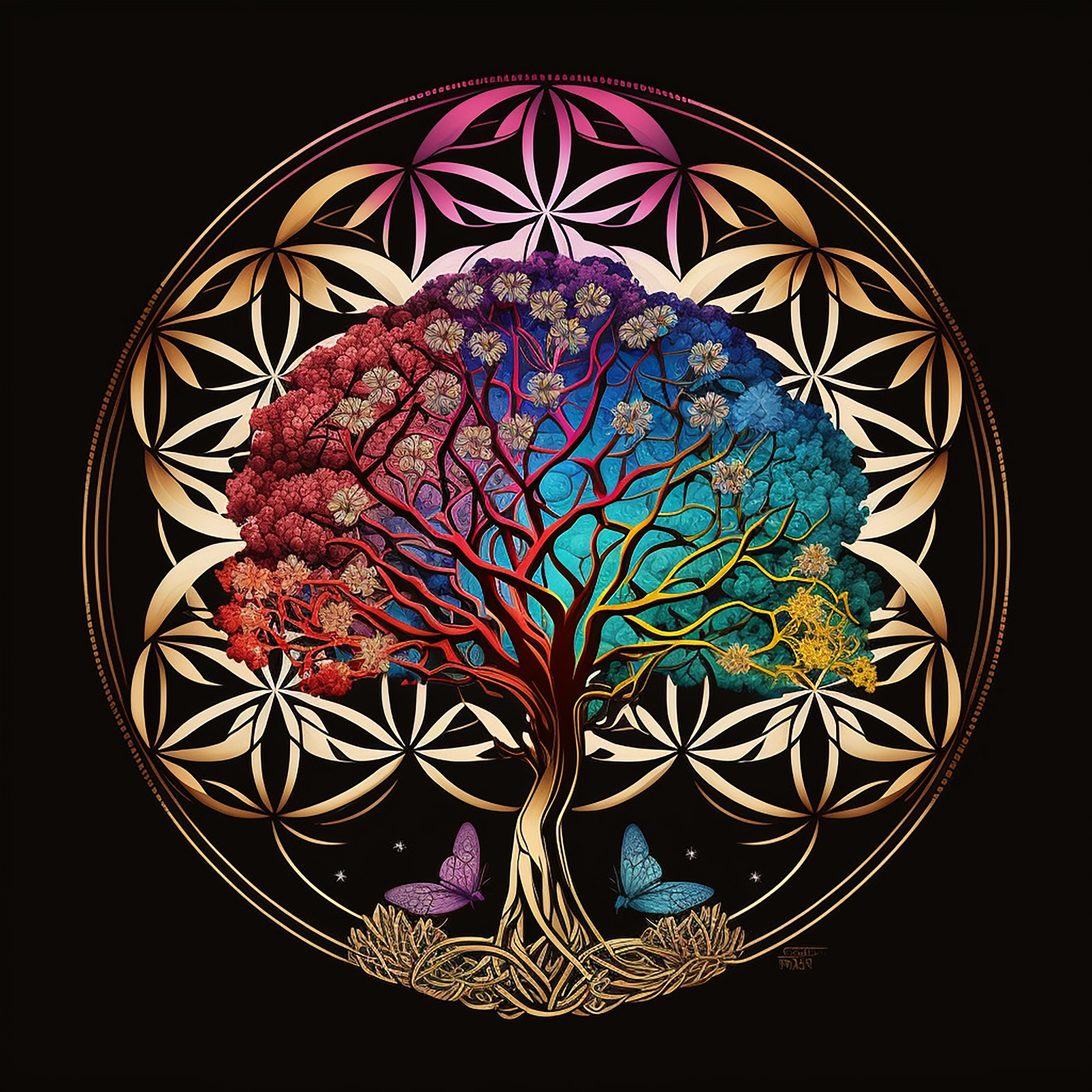Enhancing Your Massage Therapy Education with Marma Therapy
Incorporating marma therapy into your massage therapy education provides a unique perspective on holistic healing. As you delve into this ancient practice, you’ll discover a new dimension to your understanding of the human body and its energy systems.
To truly grasp the concepts of marma therapy, it’s essential to study the locations and functions of the 107 marma points. Each point has a specific purpose and is associated with particular physical and mental benefits.
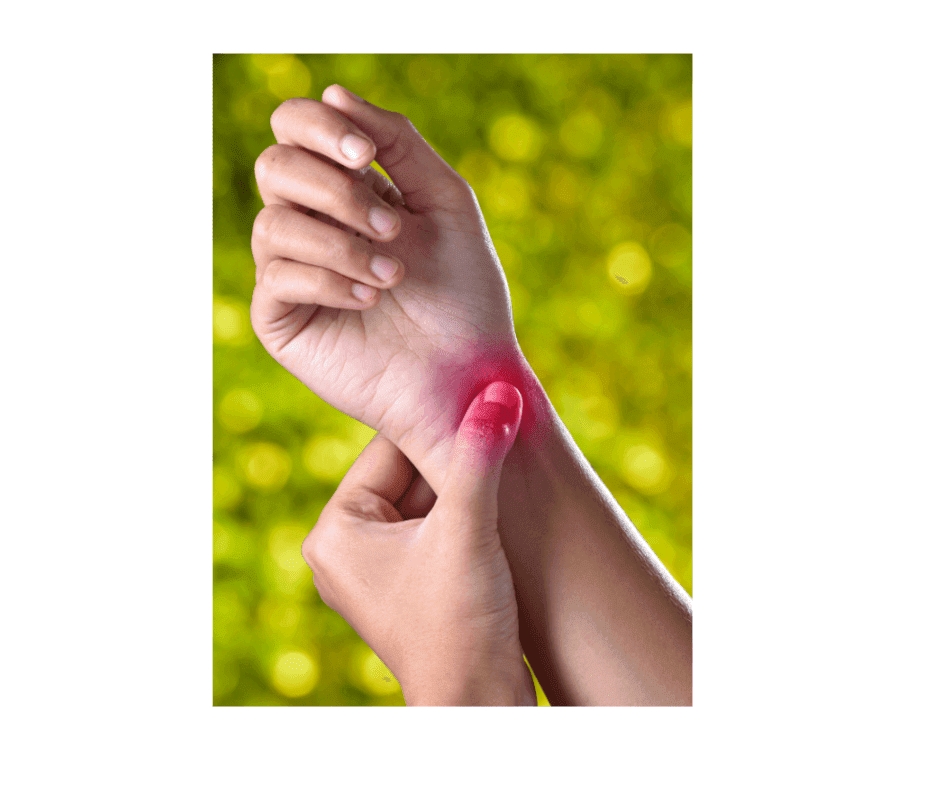
Hidden beneath your skin lies an intricate network of 107 vital energy points that ancient Indian healers discovered thousands of years ago. These points form the foundation of marma therapy, a powerful healing practice that has survived and thrived through centuries, and as a high demand service, there simply isn't enough therapists so we need inspired therapists!
Marma therapy combines precise touch, pressure, and energy work to unlock your body's natural healing abilities. As a specialized branch of Ayurvedic marma massage, this therapeutic approach addresses both physical ailments and emotional imbalances by targeting specific energy points throughout your body. Marma points can also be diagnostic tools for assessing body function. So understanding this subtle therapy can empower you even more for self care and client care.
Understanding the Ancient Science of Marma Therapy
The ancient science of marma therapy emerged from ancient India. Marma therapy's roots trace back to 4000 BC. Initially documented in ancient texts like the Sushruta Samhita, this healing art evolved into a sophisticated therapeutic system. The science was so valued that it earned the title of "half the knowledge of surgery" in Ayurvedic medicine.
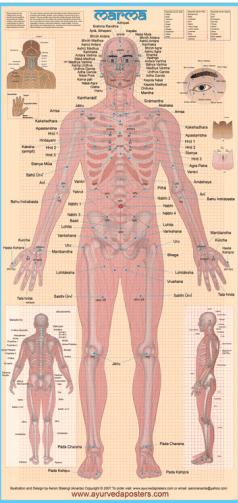
These points are classified based on their anatomical composition:
- Muscle and vessel intersections
- Bone and ligament junctions
- Nerve pathway convergences
- Organ and tissue connections
- Connection to Ayurvedic Principles
Marma therapy excels in managing various types of pain. The gentle manipulation of marma points helps release energy blockages, providing relief from musculoskeletal pain and joint issues. This therapeutic approach improves blood circulation and lymphatic drainage, supporting your body's natural healing processes. Studies show that marma therapy can effectively reduce chronic pain conditions while promoting tissue repair.
In today's fast-paced world, mental wellness is crucial. Marma therapy offers remarkable emotional benefits through its powerful ability to balance the nervous system. When specific marma points are stimulated, they trigger the release of neurochemicals like serotonin and melatonin, enhancing cognitive function and promoting better sleep.
The beauty of marma therapy also lies in its holistic approach - while addressing physical ailments, it simultaneously works on emotional and energetic levels. This integration of healing makes it particularly effective for those seeking a subtle and energetic approach.
The therapy has shown significant results in:
- Reducing anxiety and stress levels
- Improving emotional stability
- Enhancing mental clarity and focus
- Supporting better sleep patterns
- Energy Flow and Spiritual Wellness
Mastering marma therapy requires understanding both professional techniques and self-care practices. Making marma therapy a part of your daily wellness routine can amplify its healing benefits. Let's explore the essential methods and tools that make this ancient healing art effective in modern times.
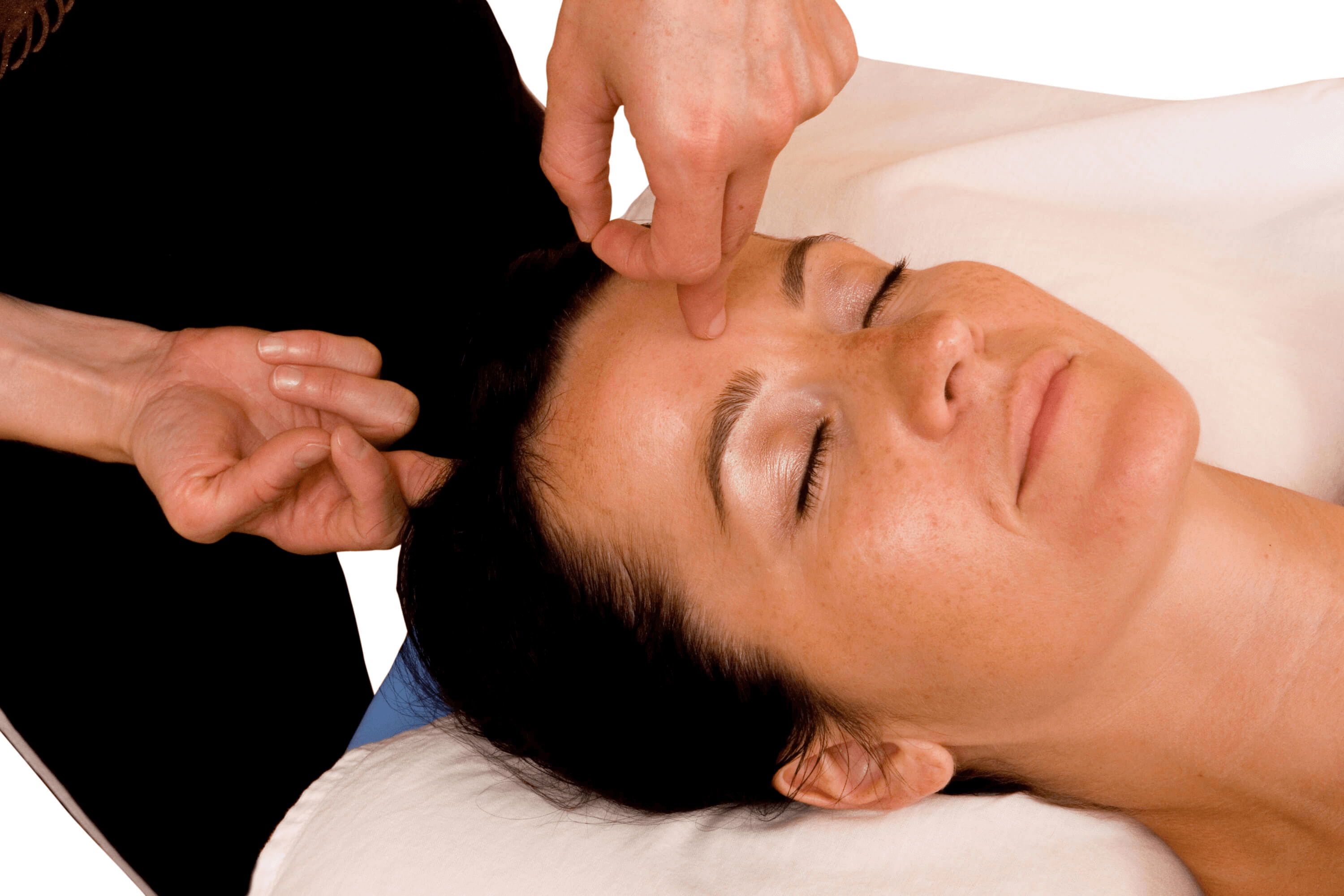
The effectiveness of marma therapy often relies on specialized tools and oils. The Marma Acupressure Stick, kansa wand or crystal wand, featuring both pointed and rounded tips, allows precise stimulation of energy points. Likewise, tools such as tuning forks, guasha, and moxibustion. Essential oils also play a crucial role in enhancing therapeutic effects.
A typical marma therapy session lasts about an hour on its own but can also be an “add on”, with treatments recommended weekly or as needed based on your condition
Marma therapy works beautifully alongside other wellness practices. It particularly complements:
- Massage Therapy
- Chiropractics
- Nurse Practitioner
- Yoga Therapists
- Physical Therapists
- Acupuncturists
- Naturopaths
- Yoga and meditation for enhanced energy flow
- Traditional Ayurvedic treatments
- Herbal medicine and dietary modifications
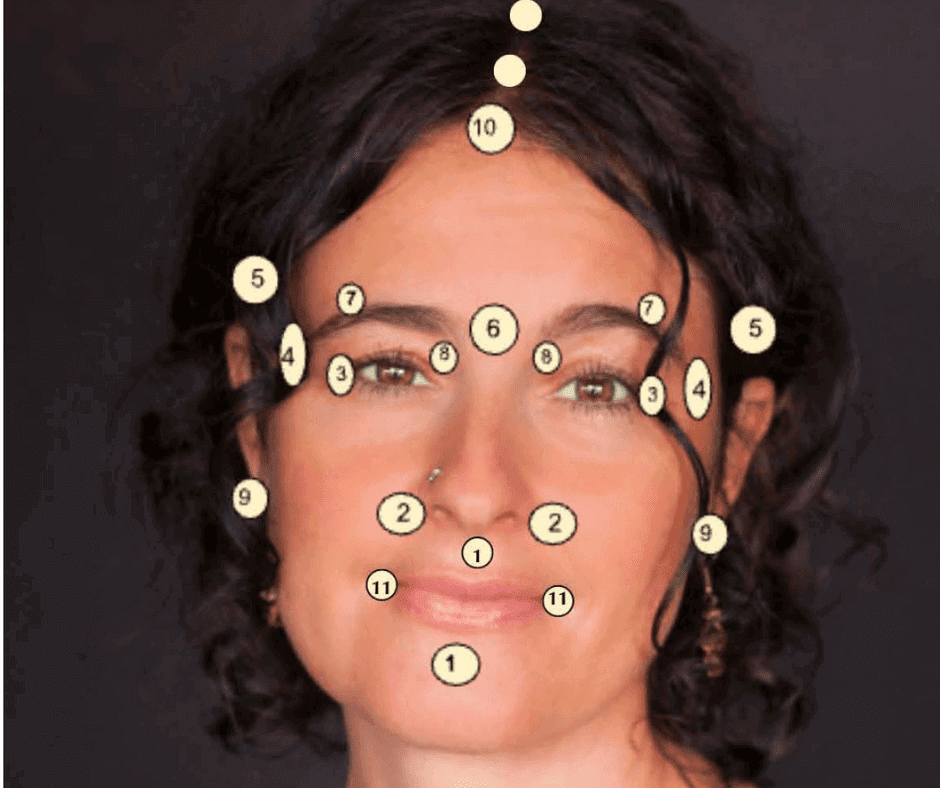 For self care, you can see the image here where I've mapped out all the facial points that you can work with. Try each one and notice your experience, build a relationship with the points by taking time to notice each one's therapeutic effect. By incorporating this practice into your routine, you're not just nurturing your skin, but harmonizing the flow of prana throughout your face body, promoting overall balance and vitality.
For self care, you can see the image here where I've mapped out all the facial points that you can work with. Try each one and notice your experience, build a relationship with the points by taking time to notice each one's therapeutic effect. By incorporating this practice into your routine, you're not just nurturing your skin, but harmonizing the flow of prana throughout your face body, promoting overall balance and vitality.Now, imagine being able to offer this transformative experience to your clients! Fulfill all your ceu's as a licensed massage therapist, or simply learn a new speciality and become an elite service provider for this high demand modality. Learn more about Marma Therapy Certification.
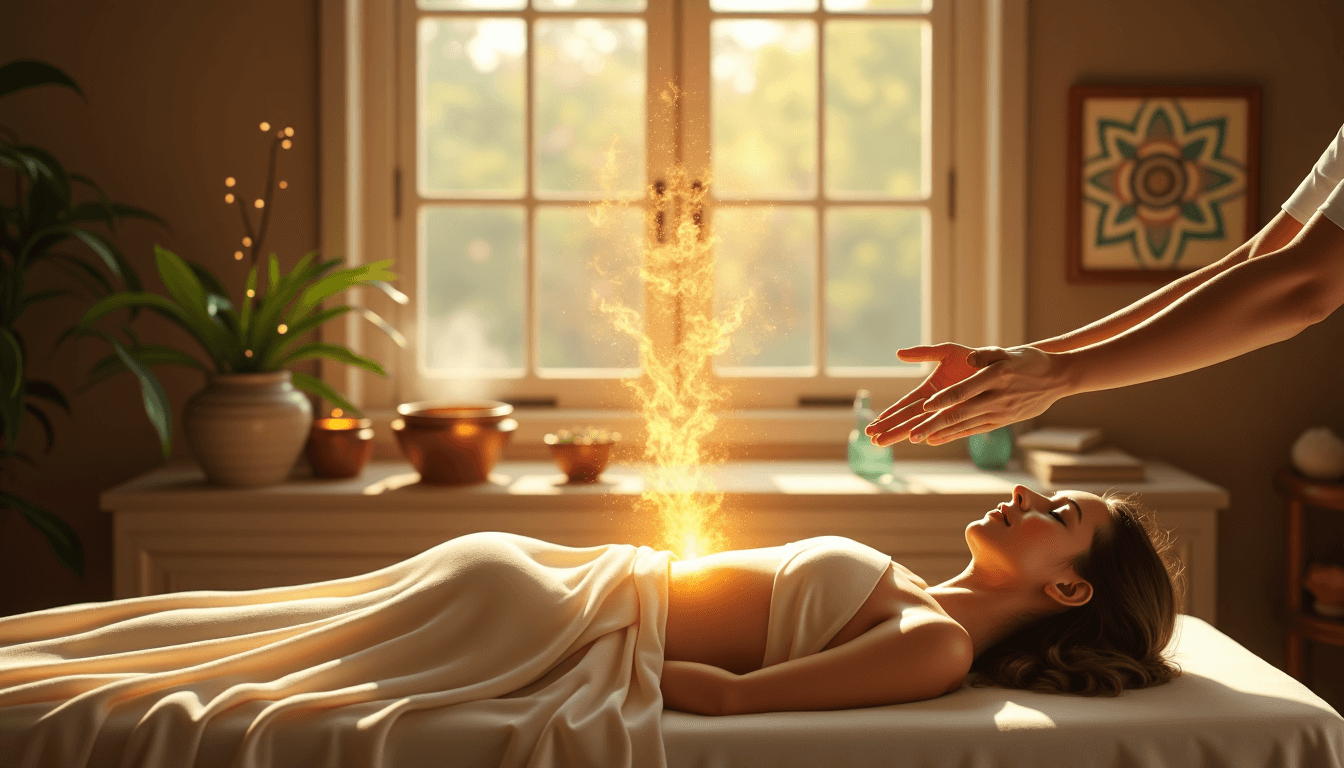 Image Source: AI Generated
Image Source: AI GeneratedThe quest for holistic healing has led many modern practitioners back to ancient wisdom. Polarity therapy, a comprehensive healing system developed in the mid-20th century, draws deeply from Ayurveda's 5,000-year-old principles of energy medicine.
This unique blend of Eastern and Western healing approaches offers a powerful framework for understanding the body's energy systems. Through its integration of Ayurvedic concepts like chakras, elements, and energy flow, polarity therapy provides a modern interpretation of time-tested healing wisdom.
In this article, we explore the fascinating connection between polarity therapy and Ayurveda, examining how ancient principles inform modern healing practices. We'll uncover the philosophical foundations, energy concepts, and practical applications that bridge these two powerful healing traditions.
The Ancient Roots of Polarity Therapy
At the heart of modern energy medicine lies a remarkable synthesis of healing wisdom, pioneered by Dr. Randolph Stone, a skilled practitioner of osteopathy, naturopathy, and chiropractic care [1]. His quest to understand the fundamental principles of healing would lead to the creation of polarity therapy, a system that bridges ancient Eastern wisdom with Western medical knowledge.
Origins in Ayurvedic Medicine
Dr. Stone's work began with a crucial observation: across different cultures and healing traditions, the concept of life energy remained central [1]. While this energy carried different names - chi, ki, or prana - its importance in maintaining health was universal. Stone noticed striking similarities between various healing systems, particularly in their understanding of energy flow and balance.
Dr. Stone's Journey to India
In 1955, Stone embarked on a transformative journey to India, spending six months studying and teaching in Bombay and Jalandhar [2]. This wasn't just a brief visit - he established a pattern of spending half of each year in India, immersing himself in the spiritual and healing traditions of the East [2]. His dedication to understanding Eastern wisdom led to his initiation into the Radha Soami Satsang Beas tradition in 1945 [3].
Integration of Eastern and Western Healing
Stone's genius lay in his ability to weave together diverse healing traditions. His background included:
- Western medical practices (osteopathy, chiropractic)
- Traditional Chinese medicine
- Ayurvedic principles
- Yogic practices
- Reflexology
This integration wasn't merely theoretical. Stone took the practical aspects of Ayurvedic marma points therapy and skillfully combined them with Western techniques like osteopathic spinal alignment and craniosacral therapy [4]. He believed that lasting healing required more than just mechanical manipulation of the body - it needed an understanding of the body's energy systems [4].
What made Stone's approach unique was his practical application of esoteric knowledge. He developed a comprehensive system that addressed not just physical symptoms but the underlying energy patterns that influence health [1]. His work showed that when there's proper energy flow, the body naturally moves toward balance and healing.
By the time he retired to India in 1974 [2], Stone had created a healing system that honored both the scientific precision of Western medicine and the energetic wisdom of Eastern traditions. His work continues to influence practitioners who seek to understand the deeper dimensions of healing.
Understanding the Five Elements
The five elements form the cornerstone of both Ayurvedic wisdom and polarity therapy's healing approach. These fundamental building blocks—ether, air, fire, water, and earth—create the foundation for understanding how energy moves through our bodies [5].
Elemental Theory in Ayurveda
In Ayurvedic tradition, these five elements are more than physical matter—they're the basic qualities that shape our existence [6]. Each element carries distinct characteristics:
- Ether (Space): Governs stillness, peace, and mental clarity
- Air: Controls movement, agility, and lightness
- Fire: Manages heat, vitality, and transformation
- Water: Influences flow, connections, and emotional balance
- Earth: Provides structure, stability, and grounding [7]
Application in Polarity Therapy
Polarity therapy uniquely interprets these elements through the lens of energy medicine. Each element corresponds to specific body functions and energy patterns [8]. The therapy recognizes that these elements are present in every cell of our body, working in harmony to maintain health [8].
In practice, polarity therapists work with these elemental energies through specific hand positions and therapeutic touches. As energy currents flow down the body, they create crossing points called chakras, each relating to different elemental qualities [5].
Balancing Elements for Healing
When elements become imbalanced, specific symptoms can emerge. For instance, a fire imbalance might manifest as digestive issues or inflammation, while an air imbalance could lead to nervous system disorders [4].
The beauty of polarity therapy lies in its practical approach to elemental balance. Through gentle bodywork, practitioners help release blocked energy patterns, allowing the elements to flow freely [4]. This process often reveals deeper emotional patterns—for example, unresolved resentments might manifest as a fire element disturbance, showing up as physical symptoms in the solar plexus area [4].
Understanding these elemental relationships helps practitioners and clients work together to restore balance. By becoming aware of how thoughts and feelings get stored in the body, individuals can release blockages and allow elemental energies to flow naturally, often leading to the spontaneous resolution of various symptoms [4].
The Three Gunas and Energy Principles
Deep within the heart of polarity therapy lies a profound understanding of the three universal energetic qualities known as the gunas. These fundamental forces, borrowed from Ayurvedic wisdom, shape how energy moves and transforms within our bodies.
Sattva, Rajas, and Tamas
The three gunas represent distinct qualities that influence our physical and mental well-being. Sattva embodies balance, wisdom, and harmony, representing the state of optimal health. Rajas manifests as action and movement, while Tamas represents inertia and stability [9]. These qualities aren't just philosophical concepts—they're practical tools for understanding how energy flows through our bodies.
Polarity's Interpretation
Polarity therapy uniquely translates these ancient principles into hands-on healing techniques. Practitioners use three distinct types of touch, each corresponding to a specific guna:
- Sattvic Touch: Light and gentle, creating openness and receptivity to healing
- Rajasic Touch: Stimulating and energizing, helping awaken blocked energy
- Tamasic Touch: Deep and dispersing, breaking up energy crystallizations [10]
This three-fold approach allows practitioners to work with energy in its different manifestations, adapting their touch based on the client's needs and the type of blockage being addressed [11].
Energy Flow and Balance
In polarity therapy, practitioners understand that energy moves in specific patterns—flowing outward from a neutral center (Sattva), expanding through active force (Rajas), and then returning through contracting energy (Tamas) [12]. This continuous cycle mirrors the natural rhythms of life itself.
When these energies become imbalanced, specific symptoms can emerge. For instance, excess Rajas might manifest as anxiety or restlessness, while predominant Tamas could lead to lethargy or stagnation [9]. Through skilled application of different touch techniques, polarity therapists help restore the natural flow and balance of these energetic qualities.
The beauty of this system lies in its holistic approach. Rather than just treating symptoms, practitioners work with these fundamental energetic principles to support the body's natural healing processes. By understanding how the gunas influence both physical and mental well-being, polarity therapy offers a sophisticated framework for addressing health challenges at their energetic source [11].
Chakras and Energy Centers
Energy centers known as chakras serve as vital hubs in the body's subtle energy system, forming a crucial bridge between physical and energetic healing. These powerful centers play a fundamental role in both Ayurvedic wisdom and polarity therapy's approach to wellness.
Ayurvedic Understanding of Chakras
The concept of chakras emerges from ancient traditions, where these energy centers are seen as connecting points for major nadis or energy channels [13]. While chakras belong to the subtle body rather than the physical form, their influence extends to both bodily and mental well-being. Interestingly, the original Sanskrit writings describe chakras not as fixed structures but as fluid manifestations of energy that can be activated through specific practices [13].
Polarity's Energy Mapping
Polarity therapy offers a unique interpretation of the chakra system, focusing primarily on five main energy centers aligned with the elements [14]. According to this framework, energy enters through the third-eye center before dividing into two distinct 'rivers' of energy:
- Positive charge: Flows along the right side of the body
- Negative charge: Moves through the left side
- Neutral zone: Creates balance between the two forces [5]
These energy currents cross at specific points, creating vortexes that correspond to the five elemental chakras. Each chakra resonates with its own unique vibration and frequency, constantly exchanging energy between positive, negative, and neutral poles [14].
Therapeutic Applications
In practical application, polarity therapy practitioners employ various techniques to balance and harmonize these energy centers. The approach combines:
- Bodywork: Using specific touch patterns ranging from light to deep pressure
- Movement: Incorporating gentle rocking motions
- Energy work: Applying reflexology and precise pressure points [14]
The therapeutic process aims to restore proper energy flow when blockages occur. When chakras become imbalanced, they can manifest as physical discomfort or emotional disturbances [15]. Through skilled application of polarity therapy techniques, practitioners help release these blockages, allowing energy to flow freely through the chakra system [16].
What makes polarity therapy's approach particularly effective is its integration with other healing modalities. The system combines craniosacral techniques with Ayurvedic concepts of elements and gunas, creating a comprehensive healing approach [14]. This integration allows practitioners to address both physical symptoms and their underlying energetic causes, supporting the body's natural healing processes.
Philosophical Foundations
Beyond the physical techniques and energy principles lies a profound philosophical framework that shapes polarity therapy's approach to healing. This unique system views wellness through a lens that encompasses both tangible and intangible aspects of human experience.
Spiritual Aspects of Healing
Polarity therapy practitioners create a sacred healing space through attentive listening and wisdom, supporting clients on their personal healing journey [17]. This approach goes beyond mere physical treatment—it's about facilitating a deep reconnection with one's inner self and vital life force. The practice draws inspiration from various wisdom traditions, recognizing that healing occurs on multiple levels simultaneously [18].
Mind-Body Connection
The relationship between mental state and physical health forms a cornerstone of polarity therapy. "As we think, so we are" became one of Dr. Stone's fundamental principles [19]. This understanding reveals how:
- Negative thoughts and reactions can manifest as physical ailments
- Mental attitude directly influences energy flow in the body
- Self-awareness leads to better health outcomes
Research suggests that changes in the human energy field can influence both disease progression and healing potential [1]. This insight has led practitioners to develop approaches that address both physical symptoms and their emotional roots.
Holistic Approach to Wellness
Polarity therapy stands out through its comprehensive framework that addresses four essential pillars of health [3]:
- Bodywork: Gentle touch techniques to release energy blockages
- Nutrition: Guidelines for maintaining energetic balance through diet
- Exercise: Specific movement patterns to enhance energy flow
- Counseling: Support for emotional and psychological well-being
This integrated approach recognizes that true healing requires attention to all aspects of human experience. The therapy aims to help individuals:
- Reconnect with Self: Facilitating a deeper understanding of one's vital nature
- Release Blockages: Addressing physical and emotional obstacles to wellness
- Restore Balance: Supporting natural health through energetic alignment [17]
What makes polarity therapy particularly effective is its emphasis on personal transformation. Rather than simply treating symptoms, practitioners work to realign the body with the soul, viewing physical conditions as reflections of deeper thoughts, beliefs, and emotional patterns [19]. This perspective encourages individuals to take an active role in their healing journey, fostering greater self-responsibility and improved self-esteem.
The practice acknowledges that life energy serves as the crucial link between mind and body. When this energy flows freely, it supports not only physical health but also emotional resilience and mental clarity. Through this understanding, polarity therapy offers tools for maintaining a balanced lifestyle, empowering individuals to participate actively in their healing process [19].
Conclusion
Polarity therapy stands as a remarkable bridge between ancient Ayurvedic wisdom and modern healing practices. This comprehensive system weaves together the profound understanding of elements, gunas, and chakras with practical therapeutic applications, creating a powerful framework for holistic wellness.
The beauty of polarity therapy lies in its ability to address health challenges at multiple levels - physical, emotional, and energetic. Through its unique interpretation of Ayurvedic principles, practitioners can help release energy blockages, restore natural balance, and support the body's innate healing abilities.
Dr. Stone's pioneering work continues to offer valuable insights for those seeking deeper healing. His integration of Eastern wisdom with Western medical knowledge proves that ancient principles remain relevant and effective in modern healthcare. The system he created provides practical tools for maintaining wellness while honoring the profound connection between body, mind, and spirit.
Are you inspired to learn the fundamentals of Polarity Therapy and Marma?? Learn More
References
[1] - https://www.wellnessinstitute.net/articles/detail/17
[2] - https://www.energyschool.com/drstonechronology
[3] - https://renewcraniosacraltherapy.com/polarity-therapy/
[4] - http://www.polaritywellness.co.uk/polarity-therapy-and-ayurveda/
[5] - https://polaritytherapy.com/five-elements
[6] - https://ayurhealing.net/blog/five-elements-of-ayurveda/
[7] - https://polaritytherapy.org/2017/12/02/healing-through-the-elements/
[8] - https://polaritytherapy.org/2020/07/21/cells-and-the-five-elements-a-polarity-perspective/
[9] - https://www.easyayurveda.com/2019/01/15/tridosha-satva-rajas-tamas/
[10] - http://www.garyauerbach.com/dga/Korn - Polarity Therapy for Dementia caregivers.pdf
[11] - https://www.polaritywellness.com/polarity-therapy
[12] - https://www.positivehealth.com/article/polarity-therapy/polarity-therapy-linking-ancient-knowledge-and-modern-physics
[13] - https://www.gersonayurveda.com/giam-blog/2019/1/6/ayurveda-and-the-chakras-by-scott-gerson-md-mphil-ayurveda-phd-ayurveda
[14] - https://soniradiance.com/polarity-therapy-chakra-balancing/
[15] - https://www.windowstotheheart.net/balancing-your-energy-flow-with-polarity-therapy/
[16] - https://polaritytherapy.org/2018/02/07/science-meets-energy-a-hands-on-guide-to-the-human-energy-field/
[17] - https://polaritytherapy.com/whatispolarity
[18] - https://amadeamorningstar.net/the-institute/
[19] - https://downtoearthbodyworks.com/polarity
[2] - https://www.energyschool.com/drstonechronology
[3] - https://renewcraniosacraltherapy.com/polarity-therapy/
[4] - http://www.polaritywellness.co.uk/polarity-therapy-and-ayurveda/
[5] - https://polaritytherapy.com/five-elements
[6] - https://ayurhealing.net/blog/five-elements-of-ayurveda/
[7] - https://polaritytherapy.org/2017/12/02/healing-through-the-elements/
[8] - https://polaritytherapy.org/2020/07/21/cells-and-the-five-elements-a-polarity-perspective/
[9] - https://www.easyayurveda.com/2019/01/15/tridosha-satva-rajas-tamas/
[10] - http://www.garyauerbach.com/dga/Korn - Polarity Therapy for Dementia caregivers.pdf
[11] - https://www.polaritywellness.com/polarity-therapy
[12] - https://www.positivehealth.com/article/polarity-therapy/polarity-therapy-linking-ancient-knowledge-and-modern-physics
[13] - https://www.gersonayurveda.com/giam-blog/2019/1/6/ayurveda-and-the-chakras-by-scott-gerson-md-mphil-ayurveda-phd-ayurveda
[14] - https://soniradiance.com/polarity-therapy-chakra-balancing/
[15] - https://www.windowstotheheart.net/balancing-your-energy-flow-with-polarity-therapy/
[16] - https://polaritytherapy.org/2018/02/07/science-meets-energy-a-hands-on-guide-to-the-human-energy-field/
[17] - https://polaritytherapy.com/whatispolarity
[18] - https://amadeamorningstar.net/the-institute/
[19] - https://downtoearthbodyworks.com/polarity

With a rich history in herbal medicine, essential oils once stood as humanity’s strongest medicinal resource until the early 1900s. Today, scientific studies underscore the efficacy of Aromatherapy, leading to its integration into mainstream medical practices and daily routines. Essential oils, derived from plant essences rich in antibacterial and antifungal properties, embody a reservoir of healing, with purity often reflected in price and potency, where even a few drops can yield significant therapeutic effects.
Aromatherapy can be seamlessly woven into daily life through various applications such as diffusers, steam inhalation, and massage. By harnessing the power of the Olfactory system, essential oils stimulate both nerve receptors and brain functions, rapidly influencing mood and physiological processes. This practice not only promotes immediate relief and balance but also aligns with Ayurvedic principles, encouraging harmony between one's constitution and environment through personalized scent profiles.
Whether it’s stabilizing Vata, pacifying Pitta, or invigorating Kapha, various essential oils cater to specific doshic needs, assisting in emotional and physical equilibrium. The thoughtful use of these plant-based remedies can provide substantial benefits, particularly during life transitions such as menopause. Incorporating essential oils into routine self-care fosters an enriched, holistic lifestyle marked by well-being and self-love, available to anyone seeking to enhance their personal health journey.
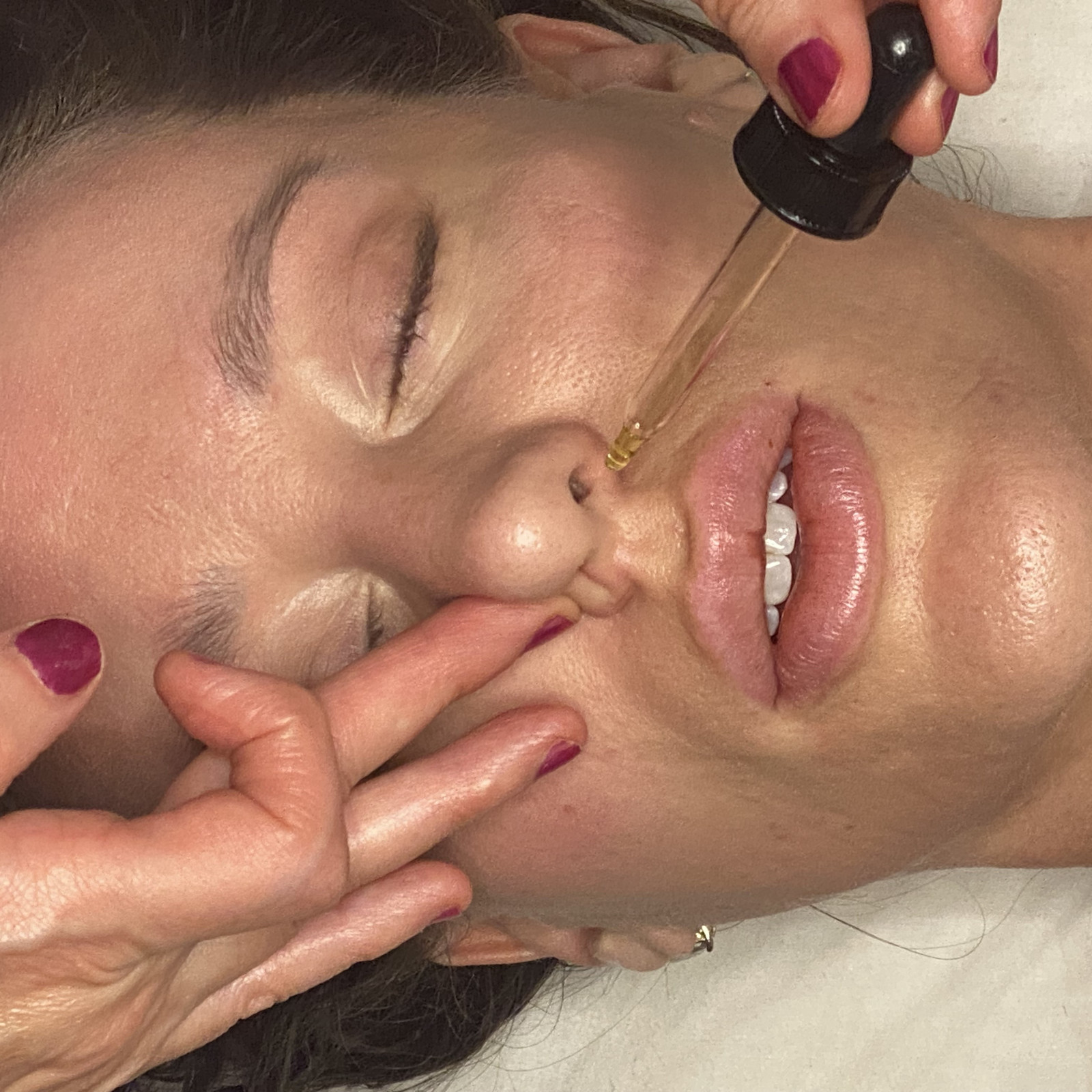
Nasya, an Ayurvedic practice involving the administration of herbal or non-herbal oils through the nasal route, offers numerous benefits by bypassing the liver's first-pass effect and gastrointestinal metabolism. It allows for rapid absorption and direct access to the central nervous system, thus enabling quick therapeutic effects and high bioavailability. The nasal mucosa serves as a vital connection to the brain, promoting mental clarity, emotional stability, and overall balance by directly interacting with sub-doshas like prana vayu, sadhaka pitta, and tarpaka kapha.
Through the olfactory pathway, Nasya treatment helps clear sinus congestion, improve breath quality, and support neurological health. The practice particularly addresses imbalances above the clavicle bone, offering relief from tension in the head and neck area. By alleviating stress and clearing stagnation, Nasya encourages the free flow of prana, enhancing relaxation and preventing blockages.
In the context of global health concerns, traditional practices like Nasya underscore the importance of self-care and immune system support. Maintaining a warm, humid environment through means such as steam baths and humidifiers can fortify the nasal mucosa against respiratory viruses. Beyond Ayurvedic practices, engaging in activities like regulating breathing, enjoying warmth in moderation, and nurturing personal joy can profoundly bolster one’s health resilience.
